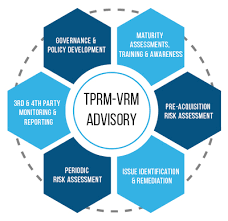Uncovering New Opportunities in the Third Party Risk Management Market
Posted by Shraa MRFR
Filed in Technology 4 views
While the core market for managing cybersecurity and compliance risk from vendors is well-established, the horizon is rich with emerging and untapped Third Party Risk Management Market Opportunities that are poised to dramatically expand the scope, value, and strategic importance of the discipline. These opportunities involve moving beyond traditional risk domains and leveraging technology to solve more complex, forward-looking challenges related to the resilience and integrity of the entire extended enterprise. One of the most significant and rapidly growing opportunities lies in the integration of Environmental, Social, and Governance (ESG) risk management into the TPRM framework. Stakeholders—including investors, customers, and regulators—are no longer judging a company solely on its own ESG performance but on the performance of its entire supply chain. This creates a massive new requirement for organizations to conduct due diligence and continuous monitoring of their third parties on a range of ESG factors, such as their carbon footprint, labor practices, diversity and inclusion policies, and ethical sourcing. There is a huge opportunity for TPRM vendors to develop new modules and integrate new data feeds that specifically address these ESG risks, transforming their platforms from a security and compliance tool into a strategic platform for sustainable and responsible sourcing.
Another major area of opportunity is the development of sophisticated "supply chain illumination" and resilience solutions. The COVID-19 pandemic and recent geopolitical events have painfully demonstrated that most organizations have a very limited understanding of their supply chains beyond their direct, Tier-1 suppliers. A disruption at a hidden fourth- or fifth-party component manufacturer can have a devastating ripple effect that is impossible to predict with traditional tools. There is a massive opportunity for a new class of TPRM solutions that can leverage AI, graph databases, and big data analytics to autonomously map an organization's entire multi-tier supply chain. By analyzing data from shipping manifests, bills of lading, and corporate ownership records, these platforms can help companies to identify hidden dependencies, geographic concentration risks, and single points of failure. This moves TPRM from a vendor-by-vendor assessment to a holistic, network-level analysis of supply chain resilience. The ability to proactively identify and mitigate these deep-seated structural risks is a hugely valuable proposition and a major strategic opportunity for the industry.
Finally, a powerful and forward-looking opportunity lies in fostering greater collaboration and data sharing across the industry to solve the problem of assessment fatigue and redundancy. Currently, every large enterprise independently assesses its key suppliers, forcing those suppliers to respond to hundreds of different, yet largely similar, risk assessment questionnaires. This is a colossal waste of time and resources for everyone involved. There is a significant opportunity to create trusted, utility-like platforms or industry-specific exchanges where a vendor can complete a single, standardized, and robust assessment that is then securely and permissionly shared with all of their customers. This "assess once, share many" model could be built on secure technologies like blockchain to ensure the integrity and control of the data. Such a platform would dramatically reduce the administrative burden on both enterprises and their vendors, freeing up resources to focus on actual risk mitigation rather than repetitive paperwork. The company or consortium that successfully builds and gains adoption for such a collaborative risk utility would not only solve one of the industry's biggest pain points but would also create an incredibly valuable and defensible business model for the future.
